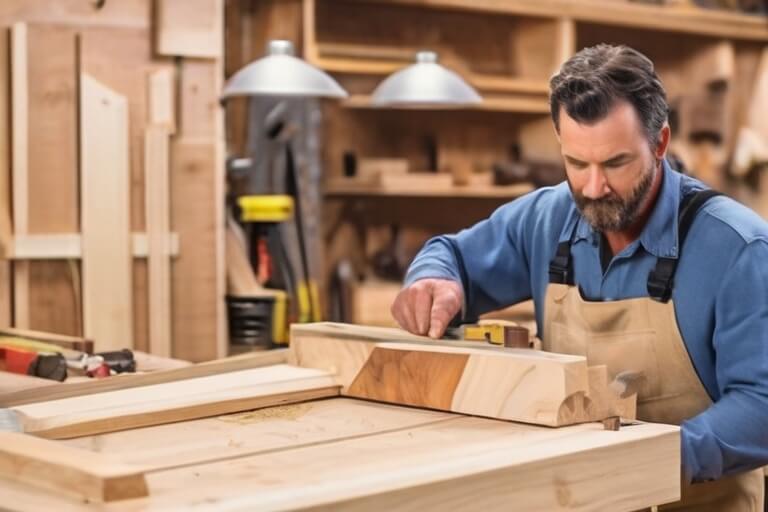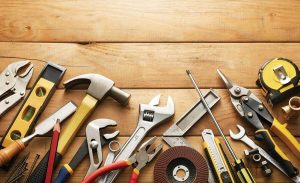Woodworking is a hobby that brings joy and fulfillment to many individuals, but it is crucial to acknowledge the potential dangers associated with it. Working with high-speed rotating blades poses a significant risk of serious injury. I personally experienced a workshop-related emergency when I was struck by a piece of wood ejected from my miter saw, resulting in three stitches.
According to the latest data provided by the Consumer Product Safety Commission, over 26,000 people sought medical attention in US hospitals for injuries related to table saw accidents in 2017 alone. This statistic does not even include injuries treated at home or those caused by other tools. To ensure safer woodworking practices, it is essential to combine the use of protective equipment such as push blocks, tools with built-in safety features, and a mindful approach while performing cuts.
Believe it or not, your thought process in the workshop is just as crucial as wearing safety glasses and ear protection. Seasoned woodworkers often advise visualizing the cut before executing it. However, this can be challenging for beginners who lack experience. It can be difficult to anticipate and plan for the unexpected without prior knowledge.
Although the specific precautions may vary depending on the tool being used, there are a few general principles to bear in mind while working. These principles will help you handle emergency situations effectively without risking severe injuries.
Visualize and even practice what a successful cut should look like before engaging any tools. According to Jon Goplerud, the shop captain at Lowell Makes, a makerspace in Massachusetts, it is crucial to consider the various tool and technique options available for each specific cut. “In woodworking, there are multiple ways to accomplish the same task,” he explains. “Determine the safest approach for the particular cut you are making.”
When deciding between using a router table or a table saw to create a bevel, or whether to resaw a thick board on a table saw or a band saw, take into account the tools at your disposal, their respective strengths, and most importantly, your own skill level and comfort with each tool.
Once you have chosen the appropriate tool, develop a plan for executing the ideal cut. If you are using a router or any other tool that requires movement along the wood, consider how to secure the board to your workbench and ensure that clamps do not obstruct the tool’s path. Determine the method for removing the finished piece from the blade and decide what to do with any offcuts. If you are cutting multiple pieces, establish in advance which hand will handle the finished board and which hand will retrieve the next one before reaching the halfway point of the cut.
The purpose of visualizing is to eliminate the need for thinking or decision-making while in the middle of a cut. The objective is to already have a clear understanding of the next step, so that there is no hesitation or uncertainty. Making decisions about what to do next can divert attention from the crucial task of avoiding contact with the spinning blade, and distractions are a major cause of accidents.
Whenever I attempt a new type of cut, I also engage in visualization exercises without the saw turned on. For instance, when I first used a level to joint a board on the table saw, I repeatedly ran the level and board over the saw to familiarize myself with the sensation of moving two pieces simultaneously. I follow the same practice whenever I utilize a new sled or jig. By practicing beforehand, the likelihood of unexpected outcomes is minimized.
Be aware of the locations that pose a risk.
Goplerud emphasizes the importance of understanding the specific risks associated with each machine. By familiarizing yourself with these risks, you can greatly reduce the likelihood of accidents. Goplerud suggests reviewing the machine’s manual, reading books, watching instructional videos, and seeking guidance from experienced individuals when working with a new machine.
One of the most obvious dangers when using power tools is the risk of coming into contact with their moving parts. To mitigate this risk, it is crucial to maintain a safe distance from whirling saw blades, typically around 4 inches. If closer proximity is necessary, using tools like push sticks, push blocks, or scraps of wood can help perform the task safely. Additionally, it is essential to keep your focus on the potential danger, as Bron Zeage, director of the Secret Underground Laboratory Recovery and Salvage, advises to always keep your eyes on the cutter for safe operation.
Kickback is another common cause of injuries. When a blade is spinning, it can catch the wood and propel it at high speeds, posing a significant risk. Table saws, planers, jointers, routers, circular saws, and miter saws are all susceptible to kickback. Woodworkers must learn how to minimize the risk of kickback, prevent wood from flying in the event of kickback, and, as a last resort, position themselves in a way that reduces the chances of being struck by flying wood.
For example, kickback often occurs on a table saw when the board becomes trapped between the blade and the fence, causing it to twist and be propelled towards the user. To avoid injury, it is crucial not to stand directly behind the board being cut. Standing to the side reduces the likelihood of being hit. Furthermore, Golerud emphasizes the importance of using properly milled boards, as twisted or warped boards are more prone to binding on the blade.
Additionally, it is crucial to consistently utilize a push block to maintain downward pressure on the wood. This precautionary measure ensures that in the event of kickback, the push block will effectively intercept it and prevent it from transforming into a dangerous projectile. Similarly, push blocks play a vital role in ensuring safety on a router table. Conversely, on a miter saw where the board remains stationary, the hold-down clamps fulfill this essential function.
Ensure that you have a well-defined strategy for shutting down.
Occasionally, mishaps occur and your cut ends up in disarray. Perhaps you inadvertently encounter a kickback while using a push block, resulting in a partially cut board spinning on an 88-tooth blade rotating at 3,000 rpm. Alternatively, the board may become stuck, preventing further pushing, and releasing it would cause it to forcefully launch across the room. In such situations, it becomes necessary to promptly deactivate the power and abandon the ongoing cut.
It is crucial to always be aware of how to swiftly turn off your machinery.
One of the aspects I particularly appreciate about my table saw, the Dewalt jobsite table saw, is the ability to switch it off using my thigh, allowing both hands to remain free and maintain control over the wood. The moment I notice or hear something amiss, I can slightly shift forward, tap the off switch with my leg, and remove myself from harm’s way. However, not all table saws or tools possess this feature. Therefore, it is essential to be familiar with which hand can safely release its grip and deactivate the tool. For instance, when using my palm router, I always hold it in a manner that enables my left hand to turn it off. I simply have more confidence in my right hand’s ability to independently control the tool. This approach ensures that I never have to contemplate how to cut the power when the router begins to veer off course from the wood.
Please pay close attention to maintaining balance and ensuring proper footwork.
One of my primary concerns revolves around the possibility of losing my balance and inadvertently falling onto the sharp blade. Consequently, I devote a significant amount of thought to my posture and weight distribution. I make a conscious effort to position myself in a manner that minimizes the risk of falling forward in the event of an unexpected tumble. With only a few exceptions, I adopt a staggered stance, with my left foot positioned slightly ahead and my knees flexed. When operating tools and pushing wood, I am careful not to exert excessive pressure on my hands. If I find myself in a situation where I need to reach for a cut, which I strive to avoid during practice sessions, I prefer to maneuver around the tool either to the left or right rather than leaning over it.
This brings me to my second point: footwork. Certain tools, such as a jointer, may necessitate movement. It is crucial to visualize and rehearse the steps involved. Additionally, Zeage emphasizes that safety begins with maintaining a clean and unobstructed floor. “Whether it’s oil, grease, or sawdust, the floor must be kept free from any potential hazards,” he advises. It is imperative to consistently and diligently remove any trip hazards such as cords, hoses, and discarded wood pieces. Even if I do not intend to maneuver around a tool, I prefer to have a clear path in case of an unforeseen emergency where it becomes my optimal escape route.
Develop a procedure that ingrains itself into one’s muscle memory.
Developing a standardized workflow for each tool is crucial. The more consistency you incorporate into your usage of each tool, the more automatic and instinctual the process becomes. This not only reduces the likelihood of making mistakes but also enables you to identify and rectify minor errors that could potentially lead to disastrous outcomes.
For example, I always keep my push stick on the right side of my table saw, opposite the fence. While I primarily use a push block, there are instances where I need to use a stick to prevent my free hand from violating the 4-inch rule. If I were to place it elsewhere, it would feel incorrect. Consequently, I would pause the machine, correct my process, and then resume working. The same principle applies if I were to bring in new wood using the wrong hand. It feels unnatural, prompting me to stop and evaluate what is amiss in my workflow. Occasionally, a particular type of cut may necessitate a procedural change, which is acceptable. However, such deviations should be a conscious decision made each time you deviate from your routine.
The only time I required stitches from a woodworking accident was when I failed to adhere to my usual process. I was cutting a scrap piece that did not require precise measurements, leading me to believe that I did not need to align and secure it carefully. This allowed me to work at a faster pace than usual, causing me to lower the blade on my miter saw before it had reached full speed. Simultaneously, I was not holding the board as securely as I typically would, as the exact location of the cut was not critical. These two mistakes resulted in the blade catching the wood and propelling it back towards me, resulting in a cut on my finger.




